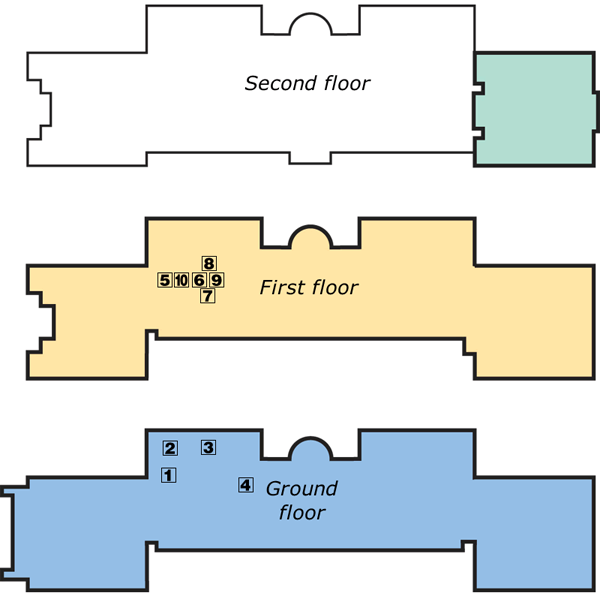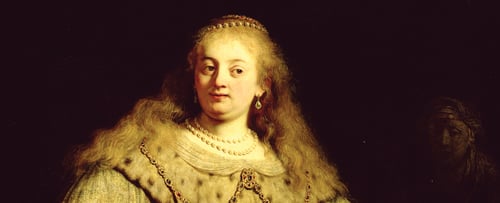Flemish and Dutch Paintings

Museo del Prado Floorplan
Descent from the Cross
Felipe II hung this beautiful composition (c.1435) by Rogier van der Weyden (1399– 1464) in El Escorial. It was moved here after the Civil War.
The Garden of Delights
The
meaning of this work (1500) by Hieronymus Bosch (c.1450–1516) is hotly
debated. The traditional view is that it is a warning against earthly
pleasures.
The Triumph of Death
This terrifying version of the Dance of Death (c.1560) is by Flemish master, Pieter Breughel the Elder (c.1525–69).
Portrait of Mary Tudor
Antonis Moor (1519–67) painted this superb portrait in 1553 of the 37-year-old Queen of England, who was to marry Felipe II.
Artemisia
This 1634 painting is only work in the Prado by Rembrandt (1606–69). Artemisia is the artist’s wife.

Artemisia, Rembrandt
The Three Graces
This
erotic masterpiece (1636–8) by Peter Paul Rubens (1577–1640) was
inspired by classical sculpture and features Love, Desire and Virginity,
two of them modelled on wives of the artist.

Jordaens Family in a Garden
Jacob
Jordaens (1593–1678) was one of the finest portrait artists of the 17th
century, as can be witnessed in this 1623 painting.
The Artist with Sir Endymion Porter
Anton van Dyck’s (1589–1641) 1623 portrait is of Endymion Porter, the artist’s patron at court.
The Triumph of the Eucharist over Heresy
This superb 1628 Rubens sketch was for a tapestry in the Monasterio de las Descalzas Reales.
The King Drinking
David Teniers the Younger (1610–90) excelled in rustic scenes, as shown in this 1638 work.
Further European Highlights in the Prado
The highlight of the small but valuable German Collection (room 55 ground floor) is Albrecht Dürer’s Self Portrait of 1498,
one of a quartet of paintings by this Renaissance master, and his
depictions of Adam and Eve. Most of the French Collection dates from the
17th and 18th centuries (first floor, rooms 2–4). Outstanding are the
landscapes of Claude Lorraine and the work of Nicolas Poussin. Felipe II
began collecting Classical sculptures (ground floor, rooms 71–4) in
the 16th century, mostly Roman copies of Greek originals. Look out for
the three Venuses – Madrid Venus, Venus of the Shell, Venus of the
Dolphin – and the priceless San Idelfonso group, dating from the reign
of the Emperor Augustus (1st century AD). The Dauphin’s Treasure
(basement) was inherited by Felipe V, heir presumptive to Louis XIV of
France. The fabulous collection of goblets, glasses and serving dishes
was made from precious stones (jasper, lapis lazuli, agate and rock
crystal) and encrusted with jewels.
Top 10 European Works of Art
Self Portrait, Albrecht Dürer (German Collection)
Hunting Party in Honour of Charles V in Torgau, Lucas Cranach the Elder (German Collection)
St Paula Romana embarking at Ostia, Claude Lorraine (French Collection)
The Parnassus, Nicolas Poussin (French Collection)
San Idelfonso statues (Classical Sculptures)
Madrid Venus (Classical Sculptures)
Venus of the Shell (Classical Sculptures)
Statue of Demeter (Classical Sculptures)
Onyx salt cellar with Mermaid (Dauphin’s Treasure)
Diaspor tray, decorated with pearl (Dauphin’s Treasure)